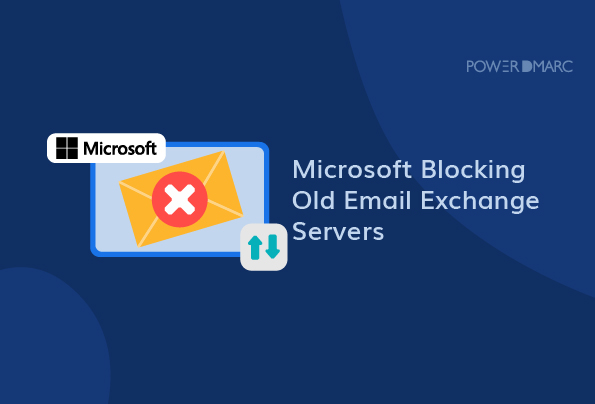Microsoft’s decision to block old email exchange servers has been the topic of discussion for many businesses and IT professionals. This decision has caused significant concern for those who still use older versions of Exchange servers. Microsoft’s goal is to improve the security of its products by retiring outdated software that is no longer supported.
In this blog post, we will discuss the reasons behind Microsoft’s decision to block old email exchange servers and the impact this decision has on businesses. We will also provide some solutions for businesses that are still using older versions of Exchange servers.
Why is Microsoft blocking old email exchange servers?
Microsoft has announced that they will be blocking connections from older versions of Exchange servers that do not meet certain requirements. This decision is based on their commitment to improving the security of their products and protecting their customers from cyber threats.
Older versions of Exchange servers, such as Exchange 2010, have reached the end of their support lifecycle, which means that Microsoft will no longer provide security updates or support for these versions. This leaves these older versions vulnerable to cyber attacks, which can compromise sensitive business information and lead to financial losses.
In addition, older versions of Exchange servers do not meet the security standards Microsoft sets. These older versions lack the modern security features that are included in newer versions of Exchange servers, which can make them more susceptible to cyber-attacks.
Impact of Microsoft’s Decision on Businesses
- The decision by Microsoft to block connections from older versions of Exchange servers will significantly impact businesses that are still using these older versions. These businesses will no longer be able to access their email accounts through these older versions of Exchange servers, which can cause disruptions to their daily operations.
- Businesses that are still using older versions of Exchange servers will also be at a higher risk of cyber attacks, as these older versions lack the security features that are included in newer versions. This can compromise sensitive business information and lead to financial losses.
- Solutions for businesses still using older versions of Exchange servers:
- If your business is still using an older version of the Exchange server, it is important to take action to ensure that your email accounts remain secure and accessible. Here are some solutions that you can consider:
- Upgrade to a newer version of the Exchange server: Upgrading to a newer version of the Exchange server that meets the security requirements set by Microsoft is the best solution. This will ensure that your email accounts remain secure and accessible.
- Move to Microsoft 365: Microsoft 365 provides a cloud-based solution that includes email, file storage, and other productivity tools. Moving to Microsoft 365 can provide your business with a secure and reliable email solution that is always up-to-date.
- Use a third-party email solution: There are many third-party email solutions available that can provide your business with a secure and reliable email solution. These solutions are often more affordable than upgrading to a newer version of the Exchange server or moving to Microsoft 365.
- Hosted Exchange: Hosted Exchange is a cloud-based solution that provides businesses with a reliable and secure email platform. Hosted Exchange providers often offer different levels of security, so businesses can choose the level of security that best meets their needs.
- Hybrid solution: A hybrid solution is a combination of on-premises Exchange servers and Microsoft 365. This solution is ideal for businesses that want to maintain some control over their email accounts while also taking advantage of the benefits of Microsoft 365.
It is important to note that businesses that are still using older versions of Exchange servers should take immediate action to address this issue. Failure to do so can lead to serious security risks and can also cause disruptions to their daily operations.
Additionally, businesses should also consider implementing other security measures to protect their email accounts, such as using multi-factor authentication, regularly updating passwords, training employees on how to identify and avoid phishing attacks, and implementing DMARC office 365.
Conclusion
In conclusion, Microsoft’s decision to block connections from older versions of Exchange servers is based on its commitment to improving the security of its products and protecting its customers from cyber threats. Businesses that are still using older versions of Exchange servers need to take action to ensure that their email accounts remain secure and accessible. Upgrading to a newer version of the Exchange server, moving to Microsoft 365, or using a third-party email solution are all viable solutions for businesses still using older versions of Exchange servers.
Related Articles
- How to Configure Single Sign-On (SSO) with Microsoft Azure Active Directory?
- What is Microsoft Quarantine?
- DKIM Selector2 Not Working for Microsoft 365 Domain
- How does Microsoft 365 handle inbound emails failing DMARC?
- How to fix “ Microsoft 365 no DKIM keys saved for this domain ” with Windows Powershell?
- SMTP Yahoo Error Codes Explained - May 1, 2024
- SPF Softfail Vs Hardfail: What’s the Difference? - April 26, 2024
- FTC Reports Email is a Popular Medium for Impersonation Scams - April 16, 2024
